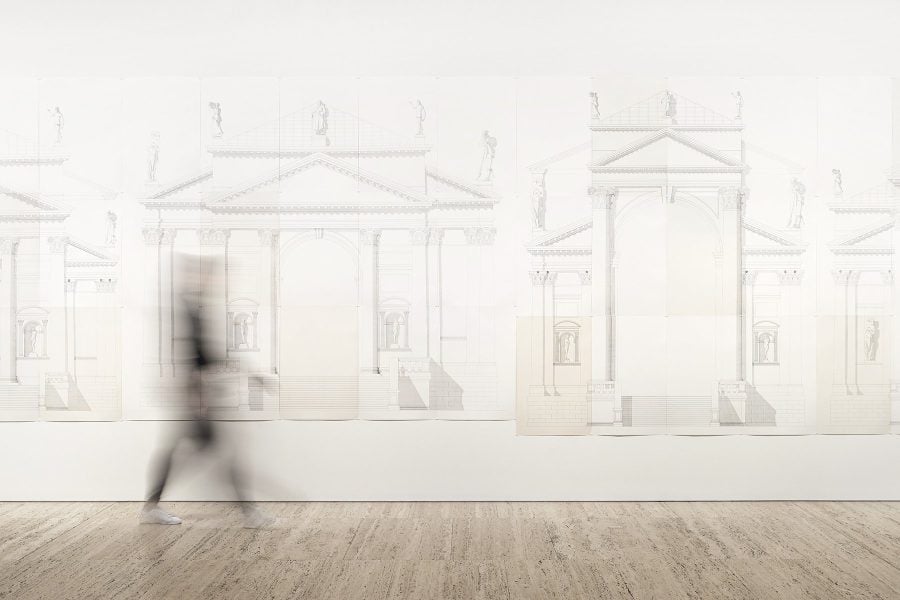Home Participants 21st Biennale of Sydney (2018) Luciano Fabro
Luciano Fabro

Luciano Fabro

Fabro was regarded as one of the key proponents of Arte Povera, a radical Italian movement of the late 1960s and early 1970s. Coined by Italian art critic and curator Germano Celant in 1967, Arte Povera, translating literally to ‘poor art’, refers to the broad range of everyday objects and simple materials used to make artworks, moving beyond the boundaries and constraints of traditional mediums. Fabro never completely accepted his association with Arte Povera, although his use of commonplace resources and some of the ideas explored in his work, such as the amalgamation of natural and manufactured materials and the use of space as a component of communication, aligned with themes reflected by the movement.
At the Art Gallery of New South Wales, Fabro presents Every Order is Contemporaneous of Every Other Order: Four Ways of Examining the Façade of the SS. Redentore in Venice, 1972. Created in the year preceding the inaugural Biennale of Sydney in 1973, the work presents multiple possibilities simultaneously, comprising a screen-printed line drawing in four parts. Fabro took inspiration for the work from Convivio (The Banquet), c. 1304, an unfinished text by Dante Alighieri in which the author explores a range of subjects and ideas with regard to ethics, politics and philosophy. Within the four trattati or books, Dante provides distinct frameworks for interpreting an artwork: the literal, the allegorical, the moral and the anagogical. In alignment with Dante’s instructions, Fabro presents possible four readings of the architectural elements of the façade of the Non Basilica del Santissimo Redentore, also referred to as Il Redentore, a sixteenth-century Roman Catholic church located in the sestiere of Dorsoduro, Venice.
Presentation at the 21st Biennale of Sydney was made possible with generous assistance from Penelope Seidler AM
Conceptual artist and writer Luciano Fabro was dedicated to redefining the expressive potential of sculpture through the use of a broad range of materials, both traditional and non-traditional, challenging the creative possibilities of the medium. Alongside his determined reinterpretation of the sculptural form, Fabro was interested in the architecture of space; creating works that investigated the relationship between an artwork and its surrounding spatial field.